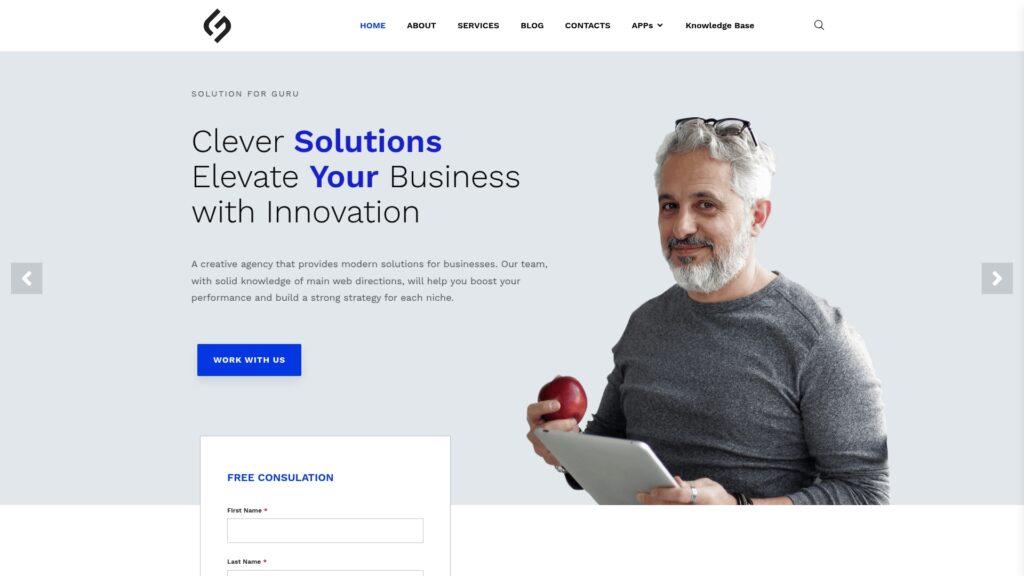How to Get Affordable Auto Insurance After an Accident or Ticket

Life happens, and sometimes that means accidents on the road or traffic violations that result in tickets. While these incidents can feel devastating – especially when you see the impact on your insurance premiums – they don’t have to permanently derail your financial stability. Understanding how accidents and tickets affect your insurance, knowing which companies specialize in high-risk drivers, and implementing strategic approaches to minimize premium increases can help you maintain affordable coverage even after driving incidents. This comprehensive guide will walk you through everything you need to know about securing affordable auto insurance after an accident or ticket, providing actionable strategies to reduce costs and rebuild your driving record.
Table of Contents
- Quick Summary
- What Are Accidents and Tickets, and How Do They Impact Auto Insurance?
- Why Do Insurance Companies Increase Rates After Incidents?
- Which Insurance Companies Specialize in Post-Incident Coverage?
- How Can You Minimize Premium Increases After an Accident?
- How Long Do Accidents and Tickets Affect Your Insurance Rates?
- Conclusions
- Frequently Asked Questions
- Benefits of Cooperation with Solution for Guru Company
Quick Summary
Key Takeaways for Drivers with Accidents or Tickets:
- Premium Increases Are Substantial but Temporary: At-fault accidents typically increase rates by 40-50%, while major violations like DUI can raise premiums by 80-100% or more. However, these increases diminish over time.
- Not All Incidents Affect Rates Equally: Minor violations may increase rates by only 10-20%, while comprehensive claims often don’t increase rates at all.
- Shopping Around Is Critical: After an incident, rate differences between companies can exceed 100% for identical coverage. Companies like Progressive, Infinity Auto, BiBerk, and Next Auto Insurance US specialize in working with drivers who have blemished records.
- Accident Forgiveness Programs Provide Crucial Protection: Many insurers offer accident forgiveness that prevents rate increases after your first at-fault accident.
- Strategic Actions Can Minimize Impact: Defensive driving courses, higher deductibles, and taking advantage of all available discounts can reduce post-incident premiums by 20-40%.
- Time Heals All Violations: Most incidents fall off your record after 3-5 years, with rates gradually decreasing as time passes.
What Are Accidents and Tickets, and How Do They Impact Auto Insurance?
Understanding the fundamental relationship between driving incidents and insurance premiums is essential for anyone who has experienced an accident or received a ticket. Insurance companies view these events as predictive indicators of future risk, which directly influences how they price your coverage.
Defining Accidents in Insurance Terms
In insurance terminology, an accident refers to any collision or incident involving your vehicle that results in property damage, bodily injury, or both. However, not all accidents are treated equally. Insurance companies categorize accidents based on fault determination, which profoundly affects how they impact your premiums.
At-fault accidents occur when you are determined to be primarily or entirely responsible for causing the collision. These accidents have the most significant impact on insurance rates because they demonstrate risky driving behavior and result in claims payouts. Common at-fault scenarios include rear-ending another vehicle, running red lights or stop signs, improper lane changes, and failure to yield right of way.
Not-at-fault accidents occur when another driver causes the collision. Ideally, these shouldn’t affect your rates since you didn’t cause the incident. However, the reality is more complex. Some insurance companies still increase rates slightly after not-at-fault accidents, reasoning that drivers who frequently find themselves in accidents—even those not their fault—may have poor situational awareness or drive in high-risk environments. Nevertheless, these increases are typically much smaller than at-fault accident surcharges.
Comprehensive claims involve non-collision damage such as theft, vandalism, weather damage, or animal strikes. Most insurance companies don’t increase rates for comprehensive claims because these incidents don’t reflect driving behavior. However, filing multiple comprehensive claims within a short period may raise concerns about fraud or excessive risk.
Understanding Traffic Tickets and Violations
Traffic tickets represent documented violations of traffic laws issued by law enforcement officers. These violations range from minor infractions like failing to signal to serious offenses like reckless driving or driving under the influence. Insurance companies use tickets as evidence of risky driving behaviors that increase the likelihood of future accidents.
Moving violations involve violations that occur while the vehicle is in motion, such as speeding, running red lights, improper passing, or following too closely. These violations typically impact insurance rates because they demonstrate behaviors directly linked to accident risk. The severity of moving violations varies significantly—a ticket for going 5 mph over the speed limit has far less impact than one for going 30 mph over the limit.
Non-moving violations include infractions like parking violations, equipment violations (broken taillights, expired registration), or seatbelt violations. These typically don’t affect insurance rates because they don’t indicate increased accident risk. However, some serious equipment violations, particularly those suggesting vehicle neglect, might influence rates with certain insurers.
Major violations include DUI/DWI, reckless driving, driving with a suspended license, leaving the scene of an accident, and vehicular manslaughter. These violations have catastrophic impacts on insurance premiums, often increasing rates by 80-150% or more. Furthermore, many standard insurance companies refuse to cover drivers with recent major violations, forcing them into high-risk insurance markets.
The Insurance Industry’s Risk Assessment Model
Insurance companies fundamentally operate on risk assessment. They collect premiums from all policyholders and use those funds to pay claims. To remain profitable, they must accurately predict which drivers will file claims and charge premiums accordingly. Accidents and tickets serve as key data points in this predictive model.
Statistical analysis consistently shows that drivers with accidents or violations on their records are significantly more likely to be involved in future incidents compared to drivers with clean records. A driver with one at-fault accident is approximately 50% more likely to have another accident within the next three years compared to a driver with no accidents. Similarly, a driver with a speeding ticket is 20-30% more likely to be involved in an accident than a driver without violations.
Consequently, when you have an accident or receive a ticket, insurance companies recalculate your risk profile. You transition from a low-risk or moderate-risk category to a high-risk category, resulting in premium increases that reflect this elevated risk. This isn’t punishment—it’s actuarial science based on decades of claims data demonstrating that past behavior predicts future risk.
How Long Insurance Companies Consider Incidents
The duration that accidents and tickets affect your insurance rates varies by state, company, and violation type. Most states allow insurance companies to consider incidents for 3-5 years from the date they occurred. During this period, the incident appears on your driving record and influences your insurance rates.
However, the impact typically diminishes over time. Many insurers implement graduated surcharge systems where the rate increase is highest in the first year after an incident, then decreases each subsequent year until the incident “falls off” your record entirely. For example, an at-fault accident might increase your rates by 45% in the first year, 35% in the second year, 25% in the third year, and finally disappear after three years.
Major violations like DUI often remain on your record longer—typically 5-10 years—and some states maintain permanent records of certain serious violations. Additionally, insurance companies can access nationwide databases that track accidents and violations across state lines, making it impossible to hide incidents by moving or switching insurers.
| Incident Type | Typical Rate Increase | Duration on Record | Time to Rate Normalization |
|---|---|---|---|
| Minor Speeding (1-9 mph over) | 10-20% | 3 years | 3 years |
| Major Speeding (20+ mph over) | 25-40% | 3-5 years | 3-5 years |
| At-Fault Accident | 40-50% | 3-5 years | 3-5 years |
| Minor Violation (failure to signal) | 5-15% | 3 years | 3 years |
| Reckless Driving | 50-80% | 5 years | 5-7 years |
| DUI/DWI | 80-150% | 5-10 years | 7-10 years |
| Not-At-Fault Accident | 0-10% | 3 years | 1-3 years |
| Comprehensive Claim | 0-5% | 3 years | 1-2 years |
Why Do Insurance Companies Increase Rates After Incidents?

Understanding the rationale behind post-incident rate increases helps drivers accept these changes and focus on strategies to minimize their impact. Insurance companies aren’t arbitrarily punishing drivers—they’re responding to statistically demonstrated increases in risk.
Statistical Predictability of Future Incidents
Insurance operates on the law of large numbers. By analyzing millions of policyholders over decades, insurance companies have developed sophisticated models that predict future claim likelihood with remarkable accuracy. These models consistently demonstrate that past incidents strongly correlate with future incidents.
Research from the Insurance Information Institute shows that a driver who causes one at-fault accident is 65% more likely to cause another within three years compared to a driver with a clean record. Similarly, drivers with speeding tickets are 30% more likely to be involved in any type of accident. These aren’t small differences—they represent fundamental shifts in risk profiles that insurance companies must account for to remain solvent.
Moreover, certain violations predict even higher future risk. For instance, a driver convicted of DUI is approximately 140% more likely to be involved in a fatal accident compared to drivers without DUI convictions. This dramatic increase in risk justifies the substantial premium increases associated with these violations.
Financial Impact of Claims Payouts
When you cause an at-fault accident, your insurance company pays claims to repair or replace damaged vehicles, cover medical expenses for injured parties, and potentially defend lawsuits filed against you. The average property damage claim costs approximately $4,700, while the average bodily injury claim exceeds $20,000. Serious accidents can easily generate $100,000 or more in total claim costs.
After paying such substantial claims, insurance companies must recoup these costs over time through higher premiums. If your premium increases by $1,000 annually for three years following an accident, that $3,000 in additional premiums helps offset the $25,000 your insurer paid to settle your accident claims. From the insurance company’s perspective, this adjustment ensures that high-risk drivers pay premiums commensurate with the costs they generate.
Furthermore, insurance companies operate with relatively thin profit margins—typically 3-5% in the auto insurance sector. A single large claim can eliminate profits from dozens of policyholders. Therefore, accurately pricing risk after claims ensures the company can remain financially stable and continue honoring claims for all policyholders.
Regulatory Requirements and Reserve Maintenance
State insurance regulators require companies to maintain sufficient financial reserves to pay all anticipated claims. When a driver’s risk profile increases due to accidents or violations, the insurance company must allocate additional reserves for that policyholder’s potential future claims. These increased reserve requirements translate directly into higher premiums.
Additionally, state regulators review and approve insurance company rating systems to ensure they’re actuarially sound and not unfairly discriminatory. The rate increases applied after accidents and tickets must be justified by statistical data demonstrating that these factors predict increased claim frequency and severity. This regulatory oversight ensures that rate increases, while substantial, reflect genuine risk increases rather than arbitrary pricing.
Competitive Market Dynamics
While it may seem counterintuitive, competitive pressure actually contributes to post-incident rate increases. Insurance companies compete aggressively for low-risk drivers who generate consistent premium revenue with minimal claims. To offer attractive rates to these preferred customers, companies must charge higher rates to high-risk drivers to maintain overall profitability.
If an insurance company failed to adjust rates after accidents and violations, they would attract and retain disproportionate numbers of high-risk drivers (a phenomenon called adverse selection), while losing low-risk drivers to competitors offering better rates. This would quickly make the company unprofitable. Therefore, risk-based pricing—including post-incident increases—is essential for competitive insurance markets to function effectively.
Which Insurance Companies Specialize in Post-Incident Coverage?
After experiencing an accident or receiving a ticket, not all insurance companies will offer you coverage at reasonable rates. Some major insurers immediately drop high-risk drivers or impose such severe premium increases that coverage becomes unaffordable. However, several companies specialize in serving drivers with imperfect records, offering more reasonable rates and working to help these drivers rebuild their insurance history. Four companies particularly stand out for their work with post-incident drivers: Progressive, Infinity Auto, BiBerk, and Next Auto Insurance US.
Progressive: Accident Forgiveness and Second Chances

Progressive has established itself as one of the most forgiving major insurance companies when it comes to accidents and violations. With over 80 years in the insurance business, Progressive has developed sophisticated risk assessment tools that allow them to price policies more accurately for drivers with blemished records rather than simply refusing coverage or charging prohibitive rates.
Accident Forgiveness Program:
Progressive’s accident forgiveness is arguably their most valuable feature for drivers concerned about future rate increases. This program prevents your rates from increasing after your first at-fault accident, potentially saving thousands of dollars. Large Accident Forgiveness comes standard with many policies after five years of accident-free driving, while Small Accident Forgiveness (for accidents costing less than $500) may be available immediately. For drivers who have already had one accident, this protection provides crucial peace of mind and financial predictability.
Loyalty Rewards Program:
Progressive explicitly rewards customers who stick with them after incidents. The Loyalty Rewards Program provides increasing discounts for continuous coverage, partly offsetting rate increases from accidents or tickets. After five years with Progressive, policyholders earn gold status with enhanced accident forgiveness and other benefits. This structure incentivizes staying with Progressive even after incidents rather than shopping around.
Snapshot Telematics Opportunity:
For drivers looking to demonstrate improved driving behavior after an incident, Progressive’s Snapshot program provides an excellent opportunity. By monitoring your driving habits in real-time, Snapshot allows you to prove you’ve become a safer driver, potentially earning discounts that offset some of the rate increases from past incidents. Safe drivers can earn up to 30% discounts through consistent demonstration of responsible behavior.
Flexible Coverage Customization:
Progressive recognizes that drivers dealing with rate increases need flexibility to manage costs. Their Name Your Price tool allows you to set a budget and see what coverage options fit within it. While you must maintain state-required minimums, this transparency helps you make informed decisions about deductibles, coverage limits, and optional coverages to balance protection and affordability.
Infinity Auto: Specializing in High-Risk Drivers

Infinity Insurance Company has built its business model specifically around serving high-risk drivers, including those with accidents, violations, or even DUI convictions. Unlike standard insurers that view these drivers as problems to avoid, Infinity sees them as customers deserving quality coverage at fair prices.
High-Risk Market Expertise: Infinity understands that accidents and tickets don’t necessarily reflect character flaws—they’re often isolated incidents in otherwise responsible lives. Consequently, Infinity’s underwriting doesn’t simply reject drivers with blemished records. Instead, they evaluate the full context of driving history, providing coverage to drivers other companies refuse. This specialization means Infinity often offers surprisingly competitive rates for drivers others consider uninsurable.
Flexible Payment Plans: Understanding that drivers dealing with rate increases often face financial stress, Infinity offers exceptional payment flexibility. Options include monthly, bi-weekly, and even weekly payment plans that align with various income schedules. This flexibility prevents coverage lapses due to temporary cash flow issues, which is critical since even brief gaps in coverage result in additional rate increases when you eventually reinstate coverage.
SR-22 Filing Expertise: For drivers requiring SR-22 certificates (proof of insurance filed with state DMV for serious violations), Infinity has streamlined processes that make compliance straightforward. Many standard insurers handle SR-22 filings reluctantly or charge excessive fees. Infinity treats this as routine business, filing documentation promptly and managing renewals without hassle.
No Down Payment Options: Some Infinity policies offer no down payment or minimal down payment options, reducing the immediate financial burden of restarting coverage after cancellation or finding new coverage after being dropped by another insurer. This accessibility ensures that financial constraints don’t force drivers into unlawful operation of vehicles without insurance.
BiBerk: Customized Solutions for Unique Situations

BiBerk, backed by the financial strength of Berkshire Hathaway, brings a different approach to post-incident insurance. While not exclusively focused on high-risk drivers like Infinity, BiBerk’s flexible underwriting and willingness to consider individual circumstances make them valuable for drivers with accidents or violations.
Circumstance-Based Underwriting: BiBerk evaluates the context surrounding accidents and violations rather than applying rigid formulas. If your ticket resulted from an emergency situation, or your accident occurred during unavoidable circumstances, BiBerk’s underwriters may consider these factors when pricing your policy. This nuanced approach can result in more favorable rates compared to companies using purely algorithmic pricing.
Specialized Coverage for Gig Workers: Many drivers who have accidents or violations use their vehicles for delivery, rideshare, or other gig economy work to supplement income. Standard personal auto policies exclude coverage during these activities, creating dangerous gaps. BiBerk offers hybrid policies that bridge personal and commercial use, ensuring you maintain continuous coverage regardless of vehicle usage. This prevents situations where you’re denied claims because you weren’t properly insured at the time of an incident.
Educational Approach: BiBerk emphasizes education, helping policyholders understand exactly what caused their rate increases and what steps will most effectively reduce them. This transparency empowers drivers to take control of their insurance costs rather than simply accepting whatever rates they’re quoted. For drivers committed to improvement, this guidance proves invaluable.
Streamlined Digital Management: After an incident, the last thing drivers need is complicated insurance management. BiBerk‘s digital platform allows quick policy updates, payment management, and document access without navigating frustrating phone systems or waiting for business hours. This convenience reduces stress during already challenging times.
Next Auto Insurance US: Technology-Driven Second Chances

Next Auto Insurance US represents the new generation of insurers using artificial intelligence and advanced analytics to assess risk more accurately and fairly. For drivers with past incidents, this technology-driven approach can reveal opportunities that traditional insurers miss.
AI-Powered Risk Reassessment: Next’s algorithms don’t simply add predetermined surcharges when they detect accidents or violations. Instead, they analyze hundreds of factors to assess your current risk level, including the age of incidents, circumstances, subsequent driving behavior, and comprehensive lifestyle factors. If you’ve genuinely improved your driving after a past incident, Next’s systems can identify this and price accordingly.
Real-Time Rate Adjustments: Unlike traditional insurers that adjust rates only at renewal periods, Next’s platform can recognize improvements in your risk profile and adjust rates accordingly with shorter intervals. If you complete a defensive driving course or your violation ages out of the highest-risk period, you see savings more quickly rather than waiting months for policy renewal.
Instant Policy Modifications: Need to adjust your deductible to reduce premiums after a rate increase? Next’s platform allows instant policy modifications without waiting for agent callbacks or processing delays. This responsiveness gives you immediate control over your coverage and costs.
Transparent Incident Impact: Next’s platform shows exactly how each incident on your record affects your premium and provides a timeline for when that impact will diminish. This transparency helps you plan financially and understand precisely what you need to do to improve your rates. You can model “what-if” scenarios like “If I take a defensive driving course, how much will my premium decrease?” and see answers immediately.
How Can You Minimize Premium Increases After an Accident?
Experiencing an at-fault accident inevitably increases your insurance premiums, but strategic actions can minimize the financial impact. By understanding your options and taking proactive steps immediately after an accident, you can potentially save thousands of dollars over the following years.
Evaluate Whether to File a Claim
Surprisingly, one of the most important decisions affecting post-accident rates is whether to file a claim at all. Insurance companies determine whether to increase your rates based on claims filed, not accidents that occur. If you have a minor at-fault accident with minimal damage, paying out of pocket instead of filing a claim preserves your clean claims record and prevents rate increases.
The Break-Even Analysis: Before deciding, calculate the break-even point. If repairs cost $2,000 and your deductible is $1,000, filing a claim saves you $1,000 immediately. However, if the resulting rate increase is $800 annually for three years, filing costs you $2,400 in increased premiums minus the $1,000 claim benefit, resulting in a net loss of $1,400. In this scenario, paying the full $2,000 out of pocket actually saves $400 compared to filing the claim.
Many drivers find that accidents costing less than $3,000-$5,000 above their deductible aren’t worth claiming when considering the multi-year premium impacts. However, this calculation becomes more complex with Progressive’s accident forgiveness, which prevents rate increases for your first claim. If you have accident forgiveness available, filing claims makes financial sense even for smaller accidents.
Increase Your Deductibles Strategically
After an at-fault accident increases your base premium, every dollar of premium becomes more expensive. If your pre-accident premium was $1,500 annually and an accident increases it by 45%, you’re now paying $2,175. Any percentage-based discount applies to this higher base, making discounts more valuable.
Increasing your collision and comprehensive deductibles from $500 to $1,000 typically reduces premiums by 15-30%. Applied to the post-accident premium of $2,175, this could save $325-$650 annually. While you accept higher out-of-pocket costs in future accidents, you’ll likely drive more cautiously after a recent accident, reducing the probability of needing to pay that higher deductible.
Balancing Risk and Savings: Ensure you can afford your chosen deductible if another accident occurs. Setting your deductible at $2,000 or $2,500 maximizes premium savings but requires substantial emergency funds. Most financial advisors recommend deductibles between $1,000-$1,500 as the sweet spot balancing meaningful premium reductions with manageable out-of-pocket exposure.
Leverage All Available Discounts Aggressively
After an accident, maximizing every available discount becomes critical. Even small discounts accumulate significantly when applied to elevated post-accident premiums.
Bundling Policies: If you don’t already bundle auto insurance with homeowners or renters insurance, doing so after an accident can save 15-25% on both policies. Contact your current insurer or shop with companies like Progressive or BiBerk that offer substantial bundling discounts. The savings from bundling can offset a significant portion of your accident-related rate increase.
Defensive Driving Courses: Most states and insurers offer premium discounts (typically 5-15%) for completing approved defensive driving courses. After an accident, these courses serve dual purposes: providing immediate rate reductions and demonstrating your commitment to improvement, which benefits future insurance applications. Courses cost $25-$100 and require 4-8 hours, making them among the most cost-effective rate reduction strategies available.
Pay-in-Full Discounts: If financially possible, pay your entire premium upfront rather than monthly. Pay-in-full discounts typically save 5-10% and eliminate monthly installment fees that can add $50-$150 annually to your costs. When dealing with elevated post-accident premiums, eliminating even small fees makes a meaningful difference.
Consider Usage Reduction
Insurance companies often offer low-mileage discounts for drivers traveling fewer than 7,500-10,000 miles annually. After an accident, reducing your driving not only lowers your premiums but also reduces your exposure to additional accidents that would compound your rate problems.
Explore alternatives like carpooling, public transportation, biking, or remote work arrangements that reduce vehicle usage. Beyond insurance savings, you’ll also save on fuel, maintenance, and vehicle depreciation. Companies like Infinity Auto and Next Auto Insurance US particularly reward low-mileage drivers with significant discounts.
Maintain Continuous Coverage
After an accident, you might be tempted to drop coverage temporarily to avoid high premiums, especially if you can temporarily use alternative transportation. However, this creates coverage gaps that result in even higher premiums when you eventually reinstate coverage. Insurance companies view coverage gaps as high-risk indicators, often imposing surcharges of 20-40% that compound your existing accident-related increases.
If finances become truly unmanageable, consider dramatically increasing deductibles and reducing optional coverages rather than cancelling entirely. Even maintaining state-minimum coverage preserves your continuous coverage history and prevents gap surcharges.
How Long Do Accidents and Tickets Affect Your Insurance Rates?

Understanding the timeline for how incidents impact your rates helps you plan financially and maintain perspective during the elevated-premium period. While rate increases feel permanent when you’re experiencing them, they do diminish and eventually disappear entirely.
Standard Lookback Periods by Incident Type
Most insurance companies use 3-5 year lookback periods for standard violations and accidents. This means incidents that occurred more than 3-5 years ago (depending on company policy and state regulations) no longer affect your rates. However, the impact isn’t constant throughout this period—it typically diminishes gradually.
At-Fault Accidents: Most at-fault accidents affect rates for 3-5 years, with the impact decreasing each year. In the first year following an accident, you might see a 45% rate increase. By year two, this might drop to 35%, year three to 25%, and disappear entirely after three or five years depending on company policy. Progressive and Next Auto Insurance US both use graduated surcharge systems that reward time without subsequent incidents.
Moving Violations: Standard moving violations like speeding or running red lights typically affect rates for 3 years. The surcharge pattern follows accidents, with the highest increases immediately after the violation and gradual decreases over time. Minor violations (5-9 mph over speed limit, failure to signal) may have shorter impact periods or smaller surcharges than major violations.
Major Violations: Serious violations including DUI, reckless driving, or driving with a suspended license remain on your record much longer—typically 5-10 years depending on state law. Moreover, the rate increases remain substantial throughout most of this period. A DUI might increase your rates by 100% or more for the first 3-5 years, with gradual decreases only in the final years before it falls off your record.
State-Specific Variations
State insurance regulations significantly affect how long incidents impact rates. Some states limit lookback periods to three years regardless of violation severity, while others allow companies to consider incidents for five years or more. Additionally, some states prohibit rate increases for certain types of violations or limit surcharge amounts.
California, for example, limits rate increases for good drivers involved in minor accidents and restricts how long companies can surcharge for violations. Massachusetts has even more stringent regulations limiting both the size and duration of post-incident rate increases. Conversely, states with minimal insurance regulation may allow companies to impose larger surcharges for longer periods.
Understanding your state’s specific regulations helps set realistic expectations for rate recovery timelines. Check with your state insurance department or work with specialists like Solution for Guru who understand state-specific regulations and can identify opportunities to minimize impacts based on local laws.
Conclusions
Experiencing an accident or receiving a traffic ticket undeniably creates financial challenges through increased insurance premiums, but these setbacks don’t have to become permanent financial disasters. Throughout this guide, we’ve explored comprehensive strategies for minimizing rate increases, finding affordable coverage, and rebuilding your driving record to eventually restore favorable insurance rates.
The key insight is that accidents and tickets, while serious, are temporary obstacles that diminish over time. Most violations and accidents affect your rates for 3-5 years, with the impact decreasing gradually each year you maintain clean driving. Furthermore, proactive steps—completing defensive driving courses, participating in telematics programs, maximizing discounts, and shopping strategically for coverage – can substantially reduce the financial burden during this recovery period.
When seeking coverage after incidents, working with the right insurance companies makes an enormous difference. Not all insurers treat post-incident drivers equally, and finding companies that specialize in or fairly serve drivers with blemished records is crucial.
Remember that insurance companies’ rate increases reflect statistical predictions about future risk, not moral judgments. An accident or ticket doesn’t define you as a person or permanent driver. It’s simply a data point that temporarily affects your risk category. By consistently demonstrating safe, responsible driving over the following years, you’ll gradually restore your favorable insurance standing and eventually return to the rates you enjoyed before the incident.
Finally, don’t face this challenge alone. The complexity of insurance markets, the substantial financial stakes, and the variations between companies and strategies make professional guidance valuable. Whether you’re dealing with your first minor speeding ticket or recovering from a serious accident, expert assistance can save you thousands of dollars and help you navigate the recovery process most effectively.
Frequently Asked Questions
Most insurance companies won’t drop you after a single at-fault accident or standard traffic violation, though they will increase your rates at renewal. Insurance is a regulated industry, and most states restrict when companies can non-renew policies. Generally, insurers can drop customers only at policy renewal (not mid-term), and they must provide advance notice—typically 30-60 days.
However, certain situations do increase your risk of non-renewal. Multiple at-fault accidents within a short period (usually 2-3 accidents within 3 years), serious violations like DUI or reckless driving, or accumulation of numerous violations may lead companies to non-renew your policy. Additionally, some insurers have specific thresholds—for example, dropping customers who exceed a certain number of claims within a specific timeframe. If your current insurer does non-renew your policy, you’ll receive advance notice allowing time to find alternative coverage.
Rate increases vary significantly based on multiple factors including the severity of your incident, your prior driving record, your insurance company, your state’s regulations, and your overall risk profile. However, general ranges help set expectations:
For minor speeding tickets (1-9 mph over limit), expect increases of 5-20% or approximately $75-$300 annually depending on your base premium. Moderate speeding (10-19 mph over) typically increases rates by 20-35% or $300-$700 annually. Major speeding (20+ mph over) or serious violations may increase rates by 40-60% or $600-$1,500 annually.
At-fault accidents typically increase rates by 40-50% or $600-$2,000 annually depending on your base rate and accident severity. Minor accidents may result in smaller increases (20-30%), while serious accidents with injuries or substantial property damage may increase rates by 50-70% or more.
Benefits of Cooperating with Solution for Guru

Partnering with Solution for Guru gives drivers a smarter path to finding affordable auto insurance after an accident or ticket. Instead of spending hours comparing rates manually, the platform simplifies the process — connecting you with trusted insurers who specialize in high-risk or post-incident coverage. Solution for Guru helps you identify discounts, explore flexible payment options, and understand which insurers consider more than just your driving record. Their guides and expert insights empower you to make informed choices, regain financial stability, and rebuild your insurance profile over time. With transparent comparisons and up-to-date industry analysis, Solution for Guru is more than just an information hub — it’s your reliable partner in navigating the challenges of securing fair insurance rates after a setback.



